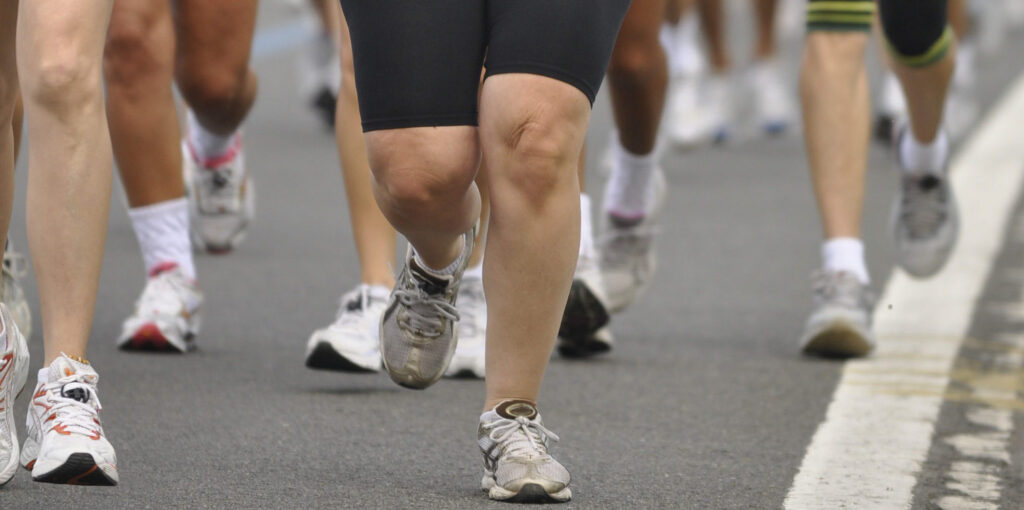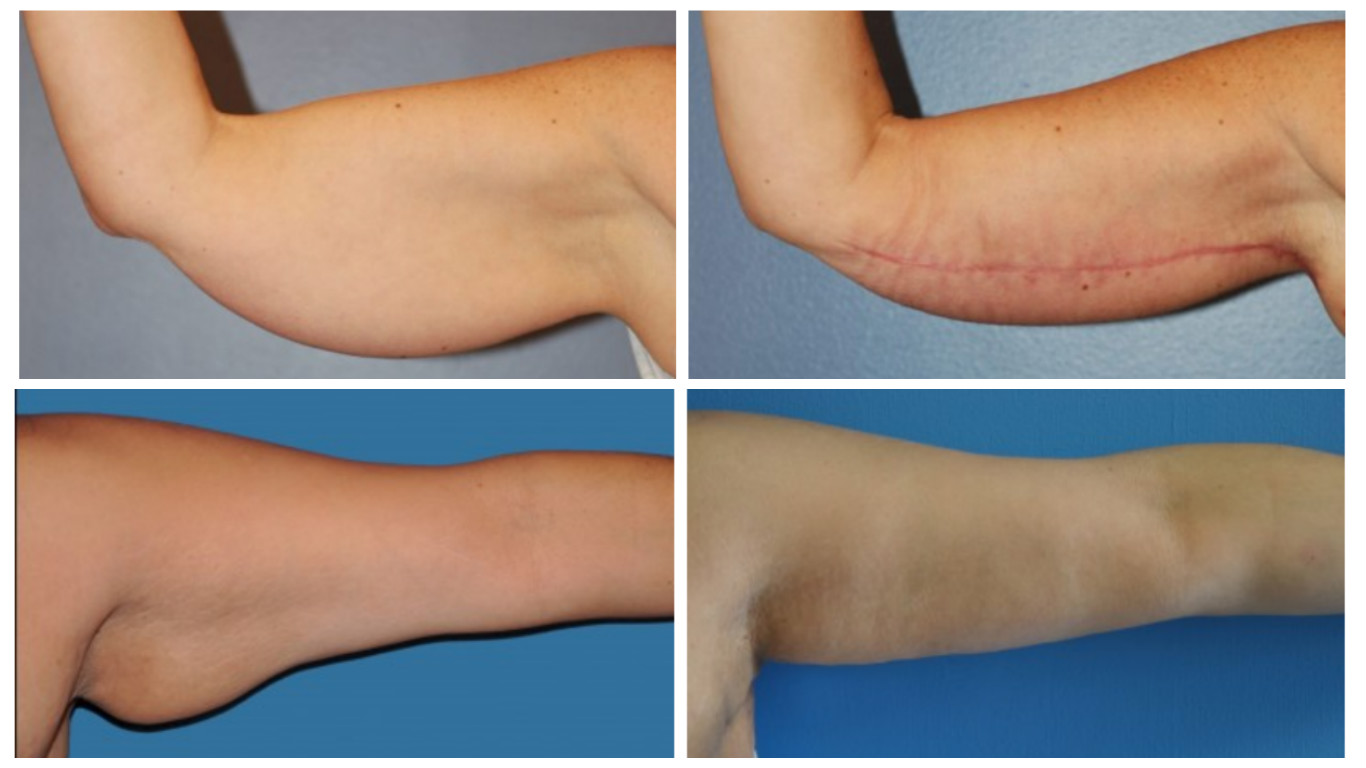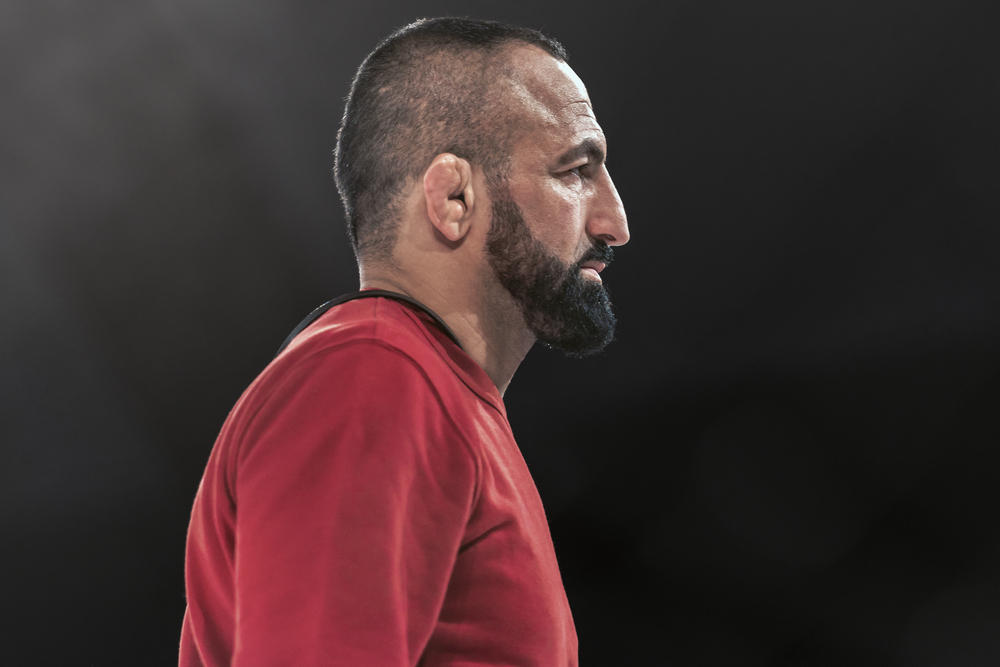If your upper arms look more like bat wings and no amount of exercise has any impact on them, brachioplasty — plastic surgery of the arms — may be the best solution for you. This procedure is often the only way to give loose skin in the triceps area a more sleek, toned appearance.
Although eating a healthier diet is always good advice to follow, it has little impact on skin laxity. Likewise, if you’ve been hitting the gym trying to tone that flabby skin, doing hours of cardio exercise, triceps dips and weight lifting won’t make that flabby skin budge.
Loose skin on the upper arms often occurs following rapid weight loss. It is also commonly caused by natural aging. Fortunately, if you have upper arm fat or loose skin, the days of looking great in form-fitting clothes or halter neck dresses are not lost and forgotten.
We spoke with two expert plastic surgeons — New York City-based plastic and cosmetic surgeon Dr. Leonard Grossman and Fort Worth, TX plastic and reconstructive surgeon Dr. Jonathan Heistein — about the main techniques and procedures employed to eliminate skin sag in the upper-arm area.
Flabby Arms After Massive Weight Loss
Dr. Grossman informs us that no matter how well you may stick to your healthy diet or how many arm lifts or bicep curls you do, it’s just not going to tighten skin with too much laxity.
“Once the skin is loose, it’s loose,” he says. Simple as that. This is especially the case after a person has lost excessive amounts of weight, causing the skin to droop not only on the arms but in various areas of the body.
Unfortunately, studies show that dramatic weight loss can cause irreparable damage to collagen and elastin in the skin. Skin is an adaptable organ; to accommodate the fat deposits that occur with weight gain, the skin is forced to stretch.
This means that after weight loss occurs, the skin simply doesn’t have the capacity to shrink back to it’s prior, toned and supple state.
At least 30 percent of patients who’ve achieved excessive weight loss will seek out plastic surgery procedures to help them overcome issues with excess skin. In many cases, patients will undergo body contouring surgery, which involves a number of consecutive procedures over time — tummy tuck, lower body lift, thigh lift, breast lift, and arm lift surgery.

RELATED: How To Tighten Loose Skin After Weight Loss
Nonsurgical Procedures
If you’re considering laser with the thought that it might provide a solution, think again, because generally laser treatments don’t work either.
“You need a significant amount of energy to shrink the skin, otherwise known as denaturing the proteins in the skin,” says Dr. Grossman. “Lasers simply do not do it at the level where it would be done safely.”
For patients with only mild skin laxity, Dr. Heistein recommends BodyTite, a radiofrequency-assisted liposuction device. “Although it won’t tighten the skin as much as a traditional or limited arm lift, the benefit of this technique is that you can achieve some improvement without any visible scarring,” he says.
In some cases, several non-invasive treatments can be combined to achieve better results. “Together, microneedling and radiofrequency may provide tissue and collagen regeneration in some patients,” says Dr. Grossman. “However, most people who have lost a lot of weight won’t get results this way. The amount of skin is just too great to respond effectively.”
Liposuction, which is a minimally invasive technique, can sometimes be used on people who only have small fat deposits and enough skin elasticity for it to shrink back after the fat has been removed. Liposuction may also be used in combination with a surgical procedure. But if you have excess skin or hanging bat wings, liposuction by itself is not going to help.
What Is Brachioplasty Surgery?
When faced with no other effective option, you can resort to surgical treatment and undergo an upper arm lift, also known as brachioplasty.
According to the American Society for Aesthetic Plastic Surgery (ASAPS), over the past two decades brachioplasty surgery has increased in popularity by more than 900 percent. 25,907 procedures were performed in 2015.
There are two main types of brachioplasty — standard brachioplasty and limited-incision brachioplasty.

BOTTOM – Limited-incision brachioplasty. Credits: Dr. Larry Sargent
With a standard brachioplasty, “the incision is made along the upper portion of the arm in what is called the bicipital groove where it may start at the elbow and end up into the underarm area,” says Dr. Grossman. This procedure is suited to those with excess skin that hangs from the underarm all the way down to the elbow.
“Excess skin and fat are removed together and the skin is simply stitched to create the best contour,” adds Dr. Grossman. You will be left with a long scar down the inside of the arm, though surgeons will do their best to place it in the most inconspicuous area possible.
Unlike other surgeries, these scars can take a little longer to mature and fade, and you should expect that the scar will always be visible to some degree.
From Dr. Heistein’s experience, this is a tradeoff patients are generally willing to make.
“Although the scar for the full arm lift is visible, most patients would rather have a visible scar and be able to wear the clothes they want, vs. not being able to fit their arms into the sleeves of their clothes,” he says.
The second option, a limited-incision brachioplasty, is suited to those who only have excess skin closer to the armpit.
“The incisions are made in the underarm area only and a portion of skin is removed as to tighten the upper arm skin,” explains Dr. Grossman. This second option will leave less visible scarring, but the procedure may not be suited to achieve all patient goals.
After massive weight loss, patients can also be left with excess skin that hangs along the upper chest or back. Surgeons can use a third procedure called an extended brachioplasty to address this issue.
In such cases the excision extends beyond the armpit to the upper body in order to remove skin or fat from the side of the chest or back on both sides. For this type of surgery, you can expect a scar from the elbow to the armpit and down the sides of the ribcage.
Overall, the chosen method of brachioplasty surgery will depend on your skin quality and how much excess skin and fat needs to be removed. The good news is that the results should last many years, as long as weight is maintained.
All types of brachioplasty can be performed on their own, and they are also frequently performed with other procedures. For instance, some patients have an upper arm lift and thigh lift at the same time.
Ideal Candidates
The overwhelming majority of patients are women. The average age bracket of patients is between 47-52 years.
Interestingly, a majority of brachioplasty patients are not people who’ve achieved extreme weight loss, but more those who don’t like the appearance of their flabby arms and no longer feel comfortable wearing sleeveless garments.
Brachioplasty Surgery Cost
The ASAPS report the national average surgeon fee is $4,424. However this is only the base fee and doesn’t include fees for the surgical facility, anesthesia, medical tests, prescriptions, surgical garments, or other miscellaneous costs related to surgery.
These additional costs will vary depending on each surgeon.
What to Expect During Arm Lift Surgery
“As far as I’m concerned, a brachioplasty is a relatively simple and straightforward procedure as long as one knows the anatomy well,” says Dr. Grossman.
Generally, the surgery takes anywhere from one to three hours. Though again, “it depends on the level of training and expertise of the surgeon you select. Sometimes even the simplest of the procedures to one can be the most difficult to another.”
Complications and Side Effects
A study published in the Aesthetic Surgery Journal looking at 2294 patients undergoing brachioplasty showed a complication rate of 3.4 percent. These were only minor complications — infection and hematoma (an accumulation of blood or fluid under the skin that may require removal). Another study in 123 patients showed similar complication rates of 4.1 percent.
ASAPS lists the following potential complications:
- Adverse reaction to anesthesia
- Hematoma
- Infection and bleeding
- Changes in sensation
- Scarring
- Allergic reactions
- Damage to underlying structures
- Unsatisfactory results that may necessitate additional procedures
Brachioplasty is considered a common and safe procedure where major complications are extremely rare. As with any procedure, it is advised that that you listen carefully to your plastic surgeon’s pre- and post-surgery instructions, as this dramatically reduces risks and complications.
Downtime and Recovery
Although recovery rate from brachioplasty will depend on each individual, “the recovery in my patients is quite simple in most cases, with the majority of people returning to work the very next day,” says Dr. Grossman. In some however, 1-2 weeks downtime could be expected.
“Most of my patients do not take pain medications following surgery and no special garments are required either,” adds Dr. Grossman. “For the first 10 to 14 days exercise and strenuous forms of activity where the arms are involved should be limited. After that, you can get back in the gym and an unlimited amount of exercise is permitted.”









